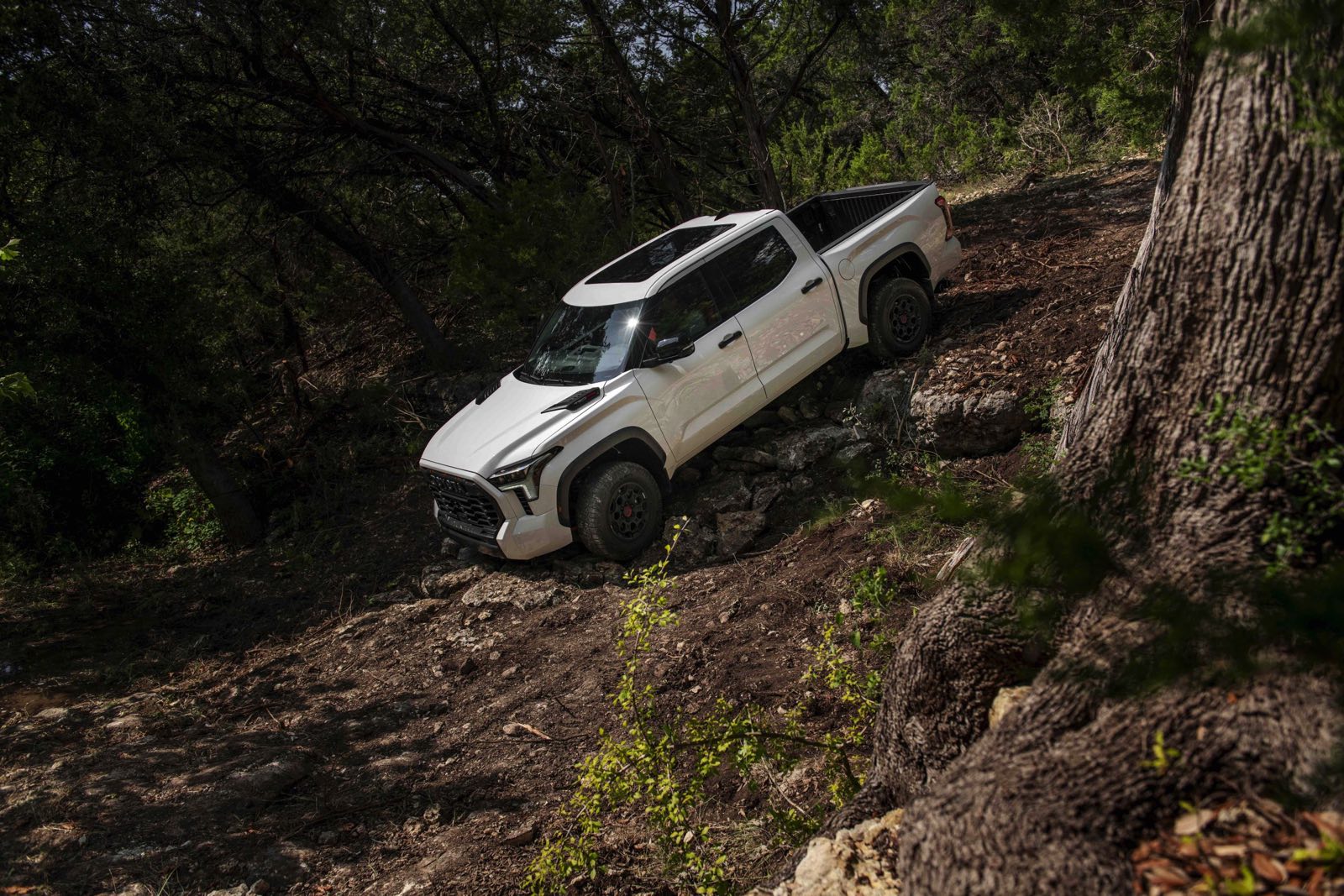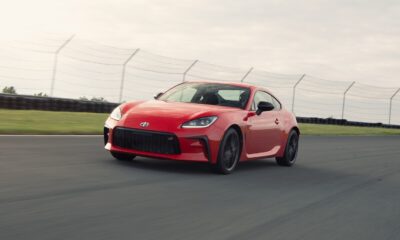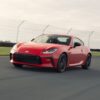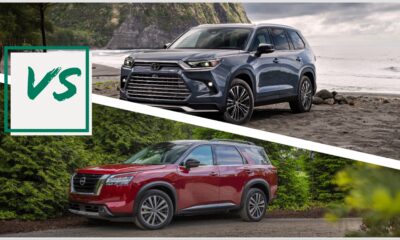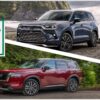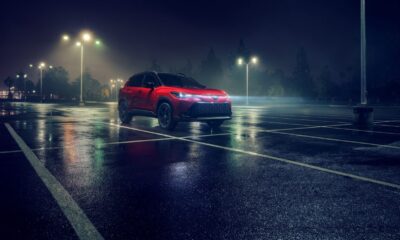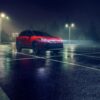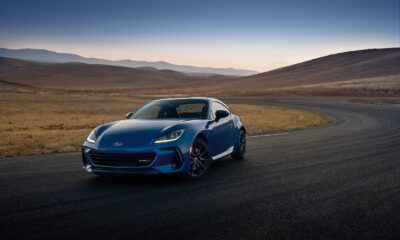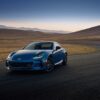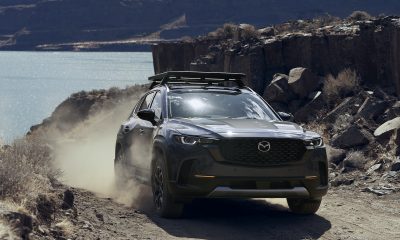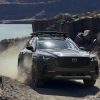Car Reviews
Toyota’s full-size Tundra – WANT A TRUCK? GOD BLESS TEXAS
Toyota’s full-size Tundra
WANT A TRUCK? GOD BLESS TEXAS
For proof that Toyota knows its customers, look no further than the 2024 Tundra.
In this case, let us specify customers in America, the only nation on the planet where pickups are primarily upscale passenger vehicles that only occasionally haul, tow, tackle challenging terrain, or do other truck-like things.
Designed in California and built in Texas, Toyota’s new Tundra focuses on things that matter: comfort, power, handling, and aesthetics that fulfill customers’ need to project adventurousness and rugged individuality. In the land of full-size pickups, rabid loyalty makes convincing someone to switch brands harder than flipping a voter from red to blue, but Toyota has an edge because of legendary reliability. With the new Tundra, engineers took steps likely to keep that card up Toyota’s sleeve.
The most basic Tundra one can buy is a two-wheel drive SR Double Cab, starting at $39,965. That is higher than the starting prices of the Big Three, but Toyota does not offer a basic Tundra work truck. A mid-size Tacoma, which still comes with a manual transmission, fills that role. The top of the Tundra line is a 4×4 Capstone with crew cab and extended bed. It lists at $78,845 before one peruses the long list of tempting, dealer-installed goodies.
For our tester, Toyota sent out a 4×4 TRD Pro that was chock-full of performance, off-road and comfort features, and listed for $72,130. It is a step or two below – and tens of thousands of dollars less – than Baja wannabes like the Ford Raptor and Ram TRX, but slots next to similarly aspirational outdoorsy models; hence, the choices made in the comparison table.

ENGINES: BETTER AND BEST
The greatest strength of the previous Tundra was a 5.7-V-8. No matter the job, it always had enough power, but it gulped gas like a teenage boy at his first all-you-can-eat buffet. Twelve mpg? On a good day. Downhill. Wind-aided.
Toyota engineers did what they do. They looked around for something that was working and made it work better. They went into their family of V-6 engines that first debuted in the 2002 4Runner. Already working well was the 3.5-liter twin-turbocharged V6 gasoline engine that debuted in 2017 in the fifth-generation Lexus LS 500. The engineers made it better.
They developed state-of-the-art cylinder heads for max-boost reliability with a two-layer water jacket for better coolant flow and combustion chamber strength and then added machined cross-channels for additional combustion chamber cooling. A water-cooled intercooler keeps turbo temperatures down for better performance.
The result is a pickup that averages 20 mpg while cranking out 389 hp and 479 lb-ft of torque, the force that gets the vehicle going and does the towing. A detuned version in SR grades produces 348 horsepower and 405 lb.-ft. of torque. Toyota calls these engines i-FORCE.
We are talking pickups here, and power is king. To juice it up, Toyota bolted a hybrid system to the same engine not to improve fuel economy, but to boost horsepower to 437 and torque to 583. Voila! iForce MAX.
Those looking for an electrified – while not electric – pickup that still has a gas engine but uses hybrid technology to attain better fuel efficiency will have to wait for the plug-in 2025 Ram 1500 Ramcharger, due in showrooms in January, Ram says.
On Toyota’s online configurator, adding hybrid to a build boosts the price by around $1,000, which is worth it for the grins generated when one mashes down on the throttle.
The choice will also pay off at trade-in time. The folks at iseecars.com analyzed more than a million transactions and found that hybrids and pickups retain value better than all other vehicles. One reason is durability. Commercial-grade components hold up over time. Hybrid systems protect internal combustion engines in two vital ways.
First, the electric motor spins up the gas engine but does not allow it to fire until the oil has had time to circulate from the oil pan throughout the engine. Most engine wear occurs upon the turn of the key.
The other thing the electric motor does is most of the work. It provides instant torque, so it shoulders the load of acceleration. The Tundra can slink through the neighborhood in all-electric mode under 18 mph, but after that, the system exists to boost acceleration and towing.
BETTER ON THE ROAD
Starting with a clean sheet of paper, engineers brought into play advances in design and materials that make today’s cars and trucks drive more crisply and ride more smoothly than before. A wide frame member improved stability and towing capability. It also helped ensure excellent ride comfort and polished handling dynamics, particularly on upper-grade models where the cabin hydraulic mounts insulate the cabin from the frame.
To make things even better, Toyota decided to abandon the leaf spring rear suspension found in Chevy and Ford pickups. Leaf springs allow for higher payloads and heavier tow weights off the rear hitch, but they come at a cost, which I call the pickup bounce. If all you have ever driven is a Ford or Chevy pickup, you have no idea what I am talking about because you have grown accustomed to the jostle.
This is where I started to grow fond of the 2024 Tundra. It rides and handles like a big car. Pushed hard on a winding back road, it has great stick in curves. Even on a rutted and choppy county road, it is comfortable and has great control. Toyota designed this truck for the fat slice of the pie: People who rarely use the work capacity of their trucks, but ride in them every day to work, school, or the grocery store. This may not be the perfect truck for a rancher or contractor, but for a suburbanite, it hits the target dead center.
OFF-ROAD READY
The TRD Off-Road package offers a slew of upgrades that enhance off-pavement exploration. Multi-Terrain Select offers adjustable settings to help control wheel spin on a variety of terrain. CRAWL Control functions as a low-speed, off-road cruise control that allows the driver to focus on steering while it maintains one of five selectable speeds. Downhill Assist Control is another off-road feature that helps the driver navigate tricky slopes by limiting the speed of the vehicle during descent.
That is more than enough to get one to the deer lease or explore Forest Service trails.
Though the TRD Pro comes with special Fox© shocks, a 1.1-inch front lift and skid plates, other brands provide better approach and departure angles, and they have metal, not plastic, front and rear bumpers.
HANDSOME INSIDE AND OUT
Designers used a technical muscle motif to create a muscular, chiseled, and athletic appearance. That includes, like every other pickup on the road, a massive front grille. As an aside, we should mention that aerodynamics is the single most significant variable in fuel economy, and pushing a barn door down the highway is inherently wasteful.
The same motif appears in the interior, which has a clean and horizontal feel. The center stack and instrument panel flow cleanly into one another. Gauge and switchgear are thoughtfully arrayed and instinctive to use. Our Apple CarPlay fired up as soon as we paired our phone and operated flawlessly.
Toyota offers a more complete suite of driver-assist technology, including a 360-degree camera system which makes parking a breeze. The Tundra’s lane-centering software works better than most, but this is a chore three-ton pickups find difficult. Keep your hands on the wheel. Please.
Premium materials are throughout the cabin, though we would like to see a little thicker seats. There is ample room for three adults in the rear, but the hybrid battery takes up all the space under the rear seat.
BOTTOM LINE
You could buy a genuinely nice car, attain better fuel economy, and spend less than even a lower trim pickup costs these days. Those who use their pickups tend to be versed in the amount of payload and towing capacity they need. If the Tundra’s capabilities fit your bill, over the long haul it is the best buy among today’s light-duty pickups.




